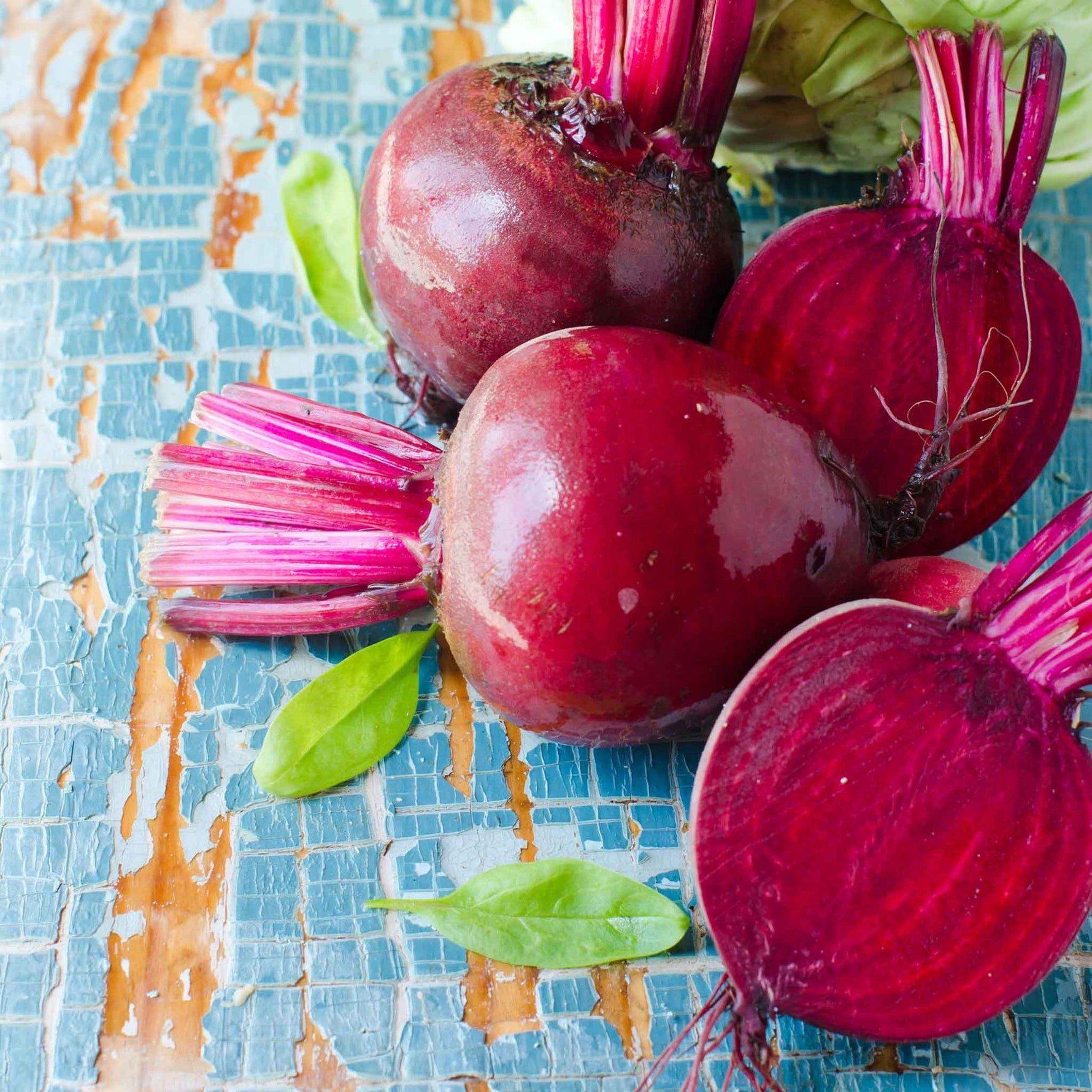
Dharaseeds
Beet Seeds - Ruby Queen
Estimated Free Delivery between April 16 and April 19.
Secured Payment Methods
Your transaction is protected with advanced security measures to keep your information confidential
Ruby Queen is a vibrant and popular beet variety known for its deep, rich color and excellent flavor. This heirloom variety produces smooth, round roots with a sweet, tender texture that’s perfect for a variety of culinary applications. Whether roasted, boiled, or eaten raw, Ruby Queen beets are an excellent choice for gardeners looking for an easy-to-grow, high-yielding variety.
Key Benefits
- Flavor: Ruby Queen beets are renowned for their sweet, earthy taste with a smooth, tender texture.
- High Yield: This variety produces a generous harvest, making it an ideal choice for both beginner and experienced gardeners.
- Rich Color: The beets have a deep, ruby-red color that adds a stunning visual appeal to any dish.
- Versatile: Great for a variety of dishes including salads, soups, roasting, and pickling.
Variety Features
- Appearance: Ruby Queen beets are round, smooth, and deep red in color. They typically grow to about 2-3 inches in diameter.
- Flavor: Mildly sweet, earthy, and tender when cooked, with a delicate texture.
- Size: Beets generally grow to a medium size, about 2-3 inches in diameter, though they can be harvested smaller or left to grow larger.
- Color: Bright, deep red with a uniform color from root to top, offering an attractive hue in the garden and on the plate.
Planting Instructions
Best Planting Season
- Cool Season: Beets prefer cooler temperatures and should be planted in early spring or late summer for a fall harvest.
- Sun Requirements: Choose a location that receives 6-8 hours of direct sunlight per day to ensure optimal growth.
Planting Details
- Sowing Depth: Plant beet seeds 1/2 to 1 inch deep in well-drained, fertile soil.
- Spacing: Space beet seeds 2-4 inches apart in rows that are 12-18 inches apart to allow room for root development.
- Soil: Beets thrive in well-drained, loose soil with a pH between 6.0 and 7.5. Add organic matter like compost to improve soil texture.
Care Instructions
Watering
- Consistent Moisture: Beets need consistent moisture, especially while the roots are developing. Keep soil moist but not waterlogged.
- Watering Tips: Water deeply at the base of the plant to avoid wetting the leaves, which can lead to disease.
Fertilizing
- Fertilization: Fertilize with a balanced fertilizer (10-10-10) when planting and again halfway through the growing season to promote healthy root growth.
- Soil Amendment: Beets prefer soil that is slightly acidic to neutral, so consider testing your soil and adjusting the pH if necessary.
Harvesting
When to Harvest
- Harvest Time: Beets are typically ready to harvest 50 to 60 days after planting, depending on the growing conditions. They can be harvested at any size, but it’s best to harvest them when they reach 2-3 inches in diameter for optimal flavor and tenderness.
- Signs of Maturity: The tops will begin to fade, and the roots will feel firm when gently squeezed. If left in the ground too long, beets can become tough and woody.
How to Harvest
- Harvesting Method: Use a garden fork or spade to gently lift the beets from the soil, being careful not to damage the roots. Leave the tops intact when harvesting to avoid unnecessary stress on the plant.
Storage
- Storage Conditions: Store harvested beets in a cool, dark place, such as a root cellar, or in the refrigerator. Beets can last for several weeks if stored properly.
- Storage Tips: Cut off the beet tops, leaving about 1 inch of the stems to prevent moisture loss. Beets can also be preserved by canning, freezing, or pickling.
Culinary Uses
- Roasted: Roasting enhances the sweetness of the beets. Slice them and roast with olive oil and herbs for a savory treat.
- Salads: Grate or slice raw beets for salads or serve pickled beets as a tangy side dish.
- Soups: Add to borscht or other vegetable soups for a hearty, earthy flavor.
- Juices and Smoothies: Beets are often used in fresh juices for a healthy, vibrant drink, or blended into smoothies for a nutrient-packed boost.
- Pickled: Preserve your beets by pickling them in vinegar and spices for an easy and delicious snack.
Conclusion
Ruby Queen beets are a wonderful addition to any garden, producing sweet, tender roots that are perfect for a variety of culinary uses. Their rich, vibrant color makes them visually striking, and their sweet flavor makes them a popular choice for gardeners and cooks alike. Whether you’re roasting, pickling, or eating raw, Ruby Queen beets offer a nutritious and flavorful harvest.








